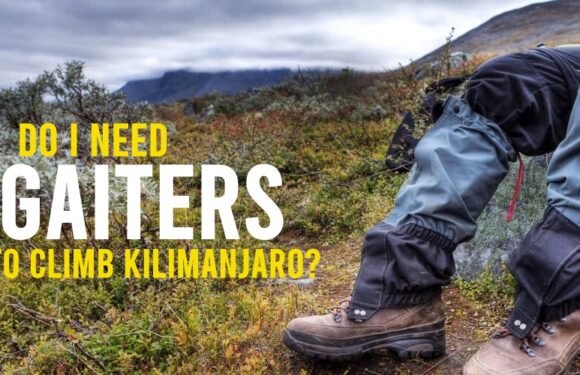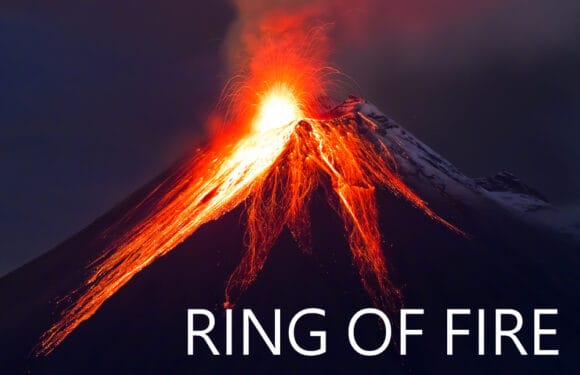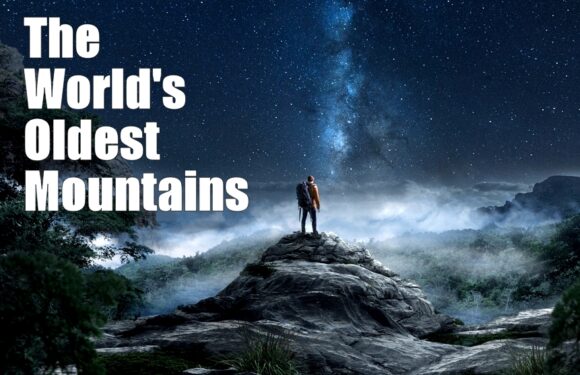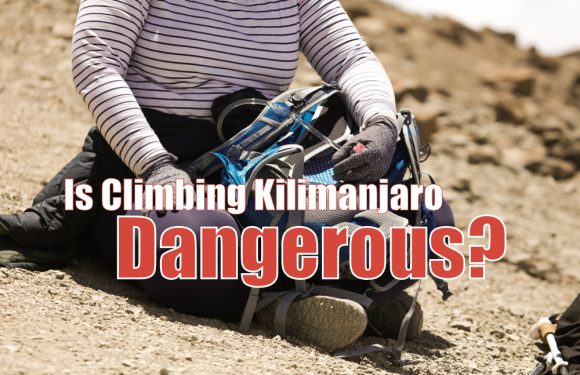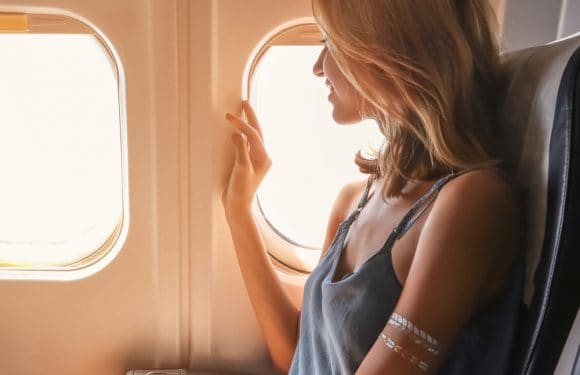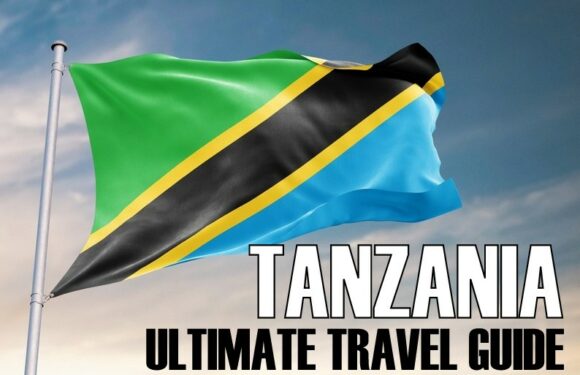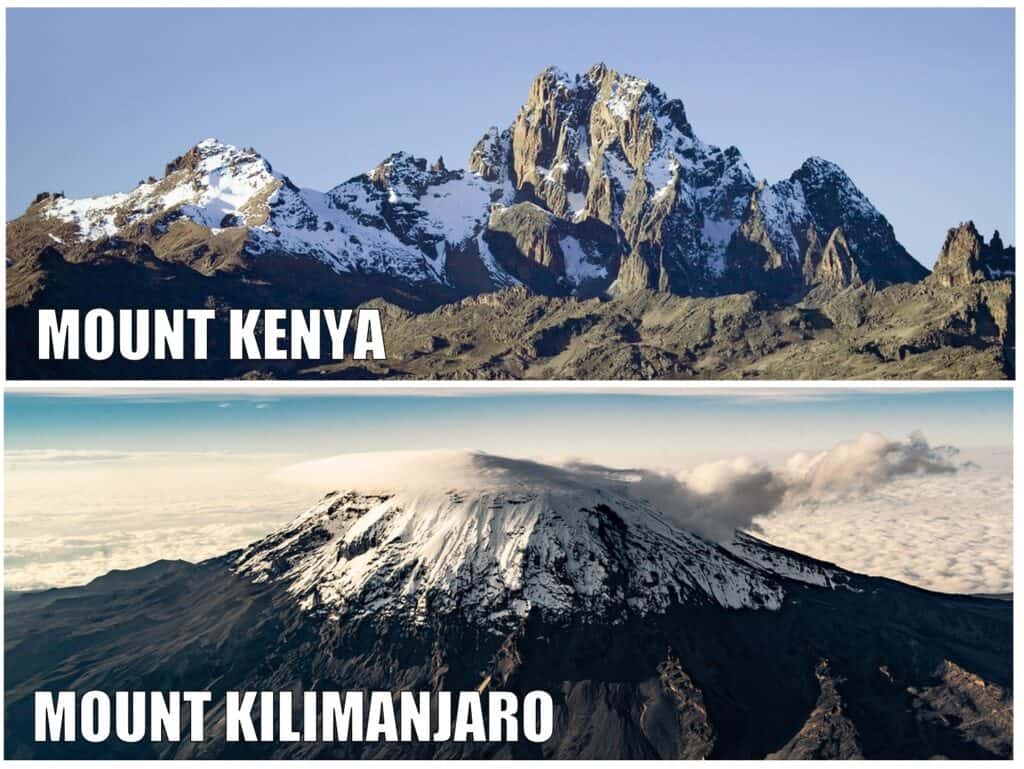
When it comes to conquering Africa’s highest peaks, two names stand out prominently: Mount Kilimanjaro and Mount Kenya.
How do these colossal mountains compare?
Mountain Location
Mount Kenya and Mount Kilimanjaro are both located in East Africa, but lie in two different countries.
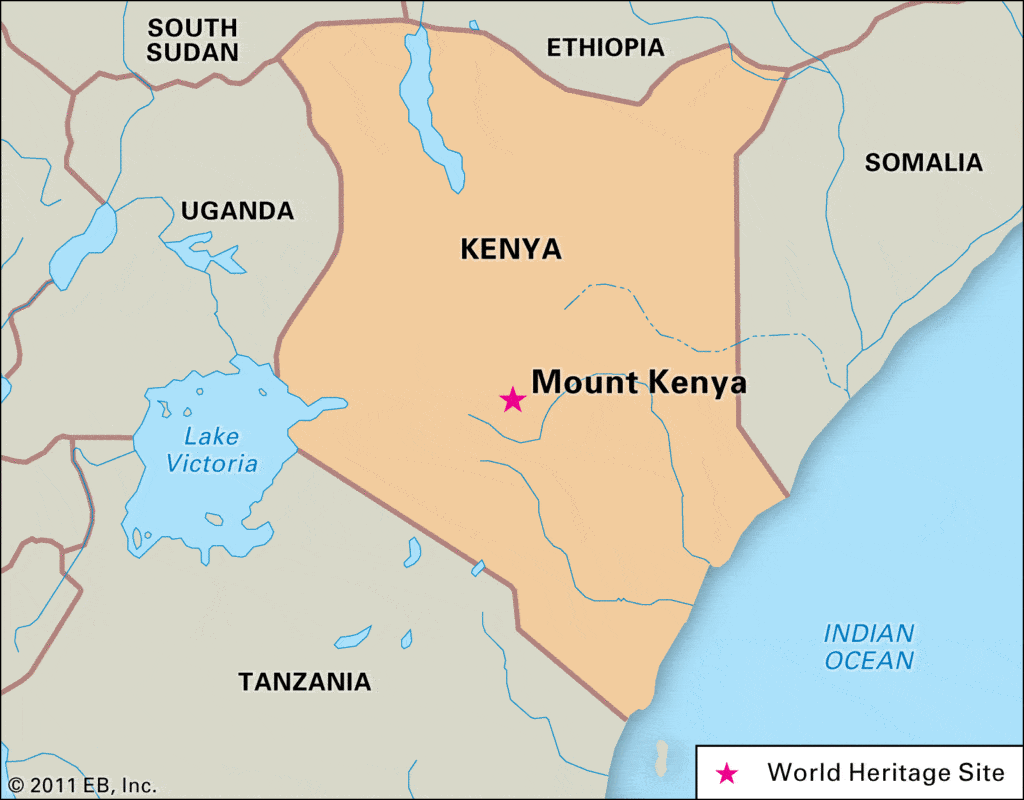
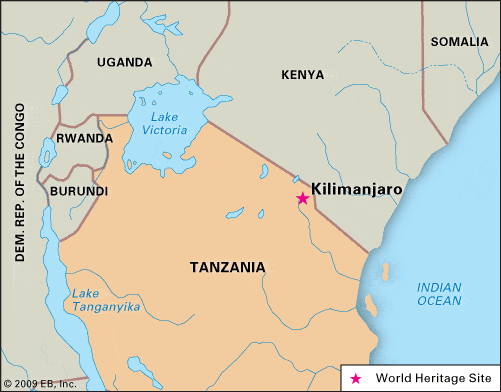
Mount Kenya is located in Kenya, about 100 miles north of Nairobi. It is accessible via Jomo Kenyatta International Airport.
Mount Kilimanjaro is located in Tanzania, near the Tanzanian-Kenyan border. It is accessible via Kilimanjaro International Airport.
Summit Height
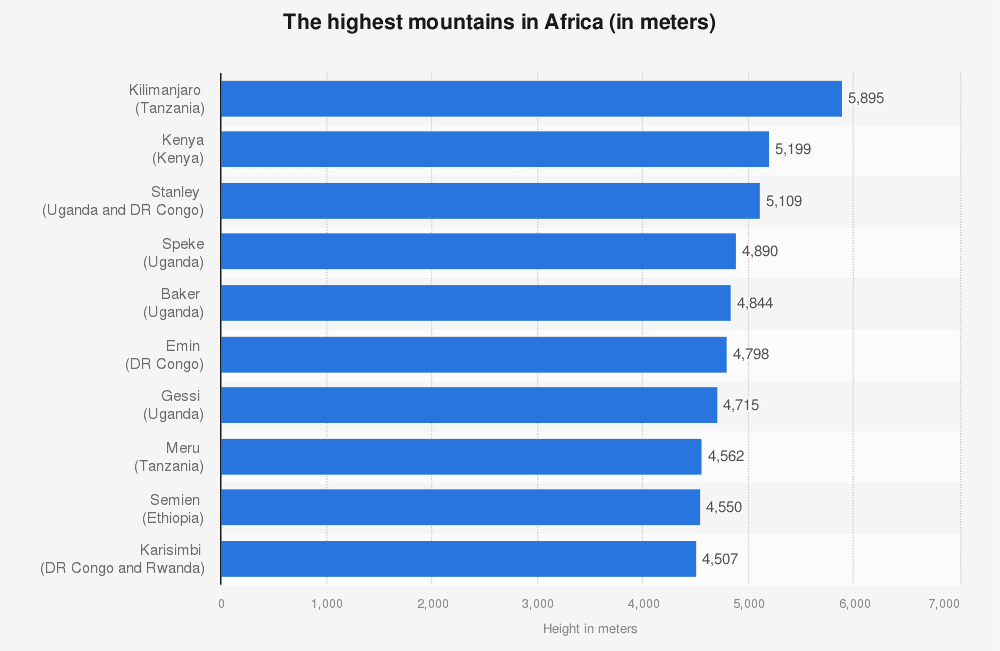
Mount Kenya, rising to a height of 17,057 feet (5,199 meters), is the second-tallest peak in Africa. The mountain was once an ancient volcano that was estimated to have been almost 22,000 feet tall, but what now remains is a steep, eroded core.
Mount Kilimanjaro, towering at 19,341 feet (5,895 meters), is the tallest mountain in Africa and the highest free-standing mountain on Earth. Mount Kilimanjaro formed as a result of the active continental shifting that created the Great Rift Valley and is comprised of three volcanic cones, one of which has collapsed to form Shira plataeu.
Climbing Skill Required
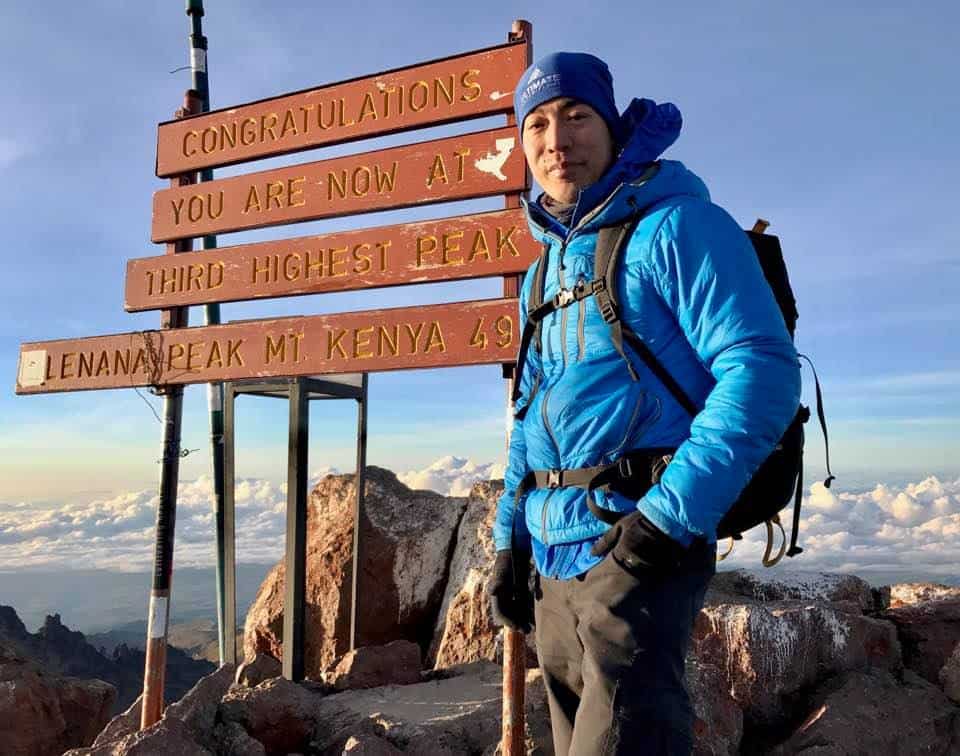
To reach the true summit of Mount Kenya, Batian Peak, technical climbing skills are required. After hiking in over several days, the technical climb is completed in one long day as a series of up to 21 pitches. Most of the climbing is on mid-5th class rock, with one 5.9 pitch and several 5.8’s. Therefore, scaling to Batian Peak is not for beginners, but for experienced rock climbers with specialized equipment including ropes and harnesses.
Most people who visit Mount Kenya climb to Point Lenana, the third highest peak on the mountain, which sits at 16,355 feet (4,985 meters). This peak can be reached without any rock climbing. It is a hiking only peak that can be done by anyone with average physical fitness.
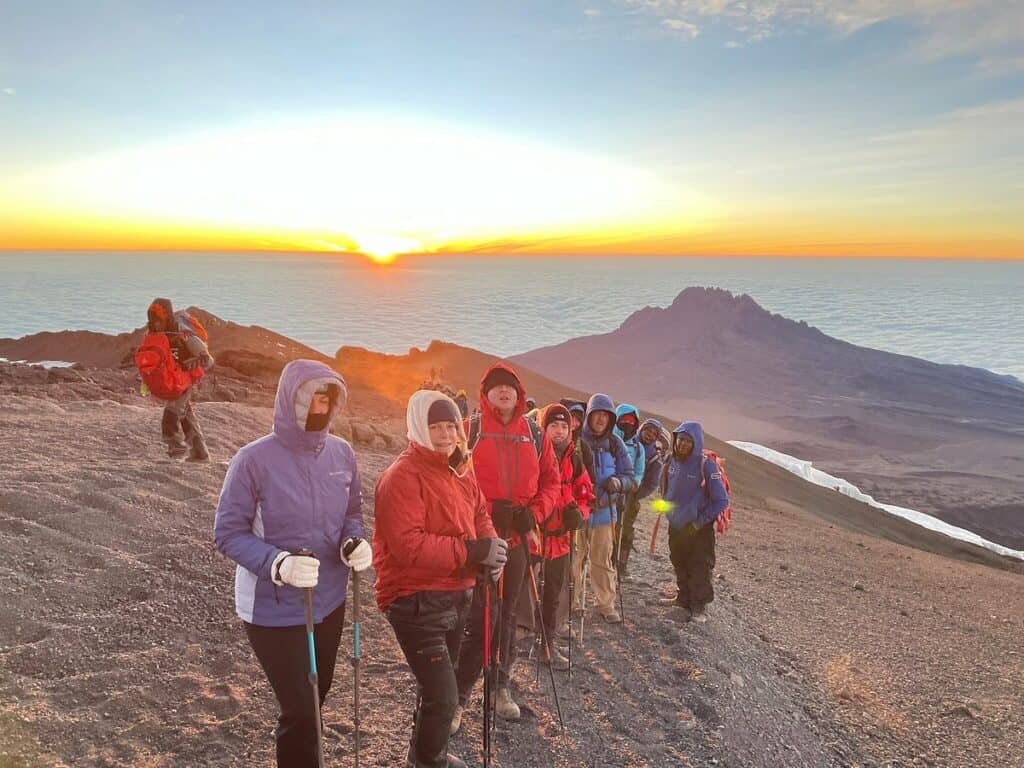
Mount Kilimanjaro is a completely non-technical trek or a “walk up” mountain. It doesn’t involve any rock climbing or technical mountaineering skills, making it more accessible to a broad range of people. The focus is on endurance, acclimatization, and determination to reach the summit. Accordingly, a reasonable degree of fitness is required to tackle this mountain.
Fitness Required

Mount Kenya’s trekking routes vary in difficulty, but most require a moderate level of fitness. Some routes involve steep sections and high-altitude challenges, so it’s advisable to have some prior hiking experience.
Climbing Kilimanjaro demands a higher level of physical fitness and mental strength than Mount Kenya due to its greater elevation, harsher conditions, and longer trip duration. The high altitudes can be physically taxing, so proper preparation is crucial.
Climbing Routes

Mount Kenya has 5 main trekking routes. The most popular routes are lsited below:
1. Naro Moru Route
Known for its accessibility, the Naro Moru Route is the most popular route. It is favored by trekkers who want to reach Point Lenana in the fastest way. The route approaches from the west and has huts at Met Station and MacKinders. The trail is very steep and not very scenic.
2. Sirimon Route
The Sirimon Route is a more gradual climb than Naro Moru. Therefore many people use Sirimon to ascend and use another trail to descend. The route has two huts, Old Moses and Shiptons, with dormitory rooms, toilets, and campsites. This route is known for its scenic beauty, passing through diverse ecosystems including bamboo forests, highland moorlands, and glacial valleys.
3. Chogoria Route
The Chogoria Route is the longest route on Mount Kenya. It is considered to be the most beautiful and interesting route. The slower ascent offers more prospects for acclimatisation and time to enjoy the scenery. However, this route does not have hut accommodations at high camp.
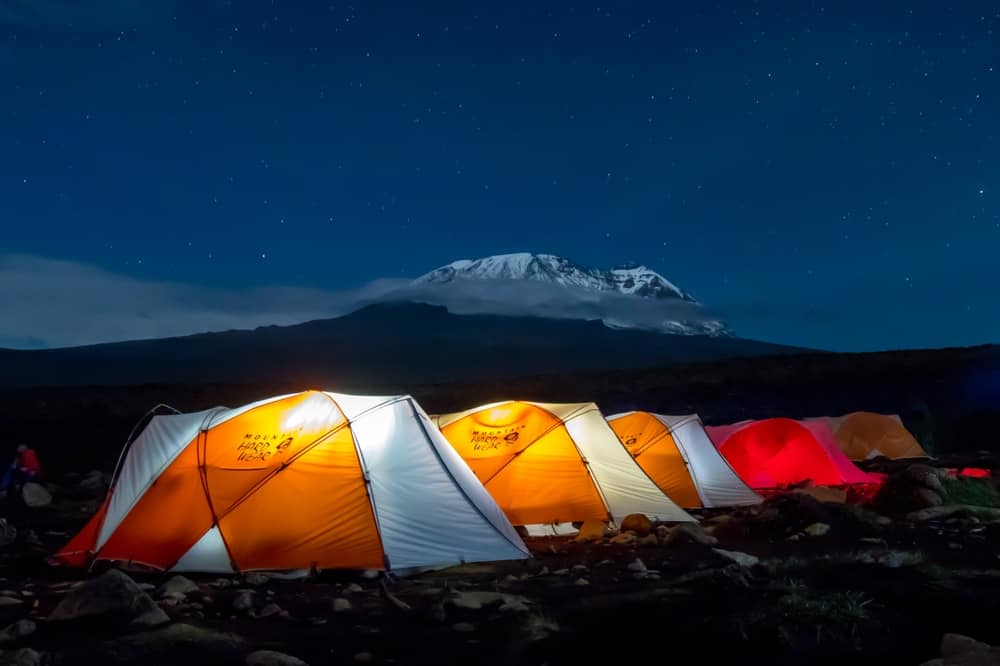
Mount Kilimanjaro offers 7 main trekking routes. The most popular routes are lsited below:
1. Marangu Road (Coca-Cola Road)
Renowned as the oldest established route on Kilimanjaro, the Marangu Route is often dubbed the “Coca-Cola Route.” The route is characterized by huts for overnight stays, providing a degree of comfort. However, it’s considered less scenic and offers fewer opportunities for acclimatization.
2. Machame Route (Whiskey Route)
The Machame Route, often referred to as the “Whiskey Route,” is a popular choice for its varied landscapes and stunning views. It offers a better acclimatization profile as it ascends through rainforests, moorlands, and alpine deserts. Nights are spent at camp in tents, adding a sense of adventure to the journey.
The Lemosho Route is celebrated for its varied scenery and high success rate. It’s a longer route, allowing for better acclimatization and decreasing the chances of altitude issues. This is our favorite route on Kilimanjaro for its balance of beauty, lower foot traffic and high success rate.
Trip Duration
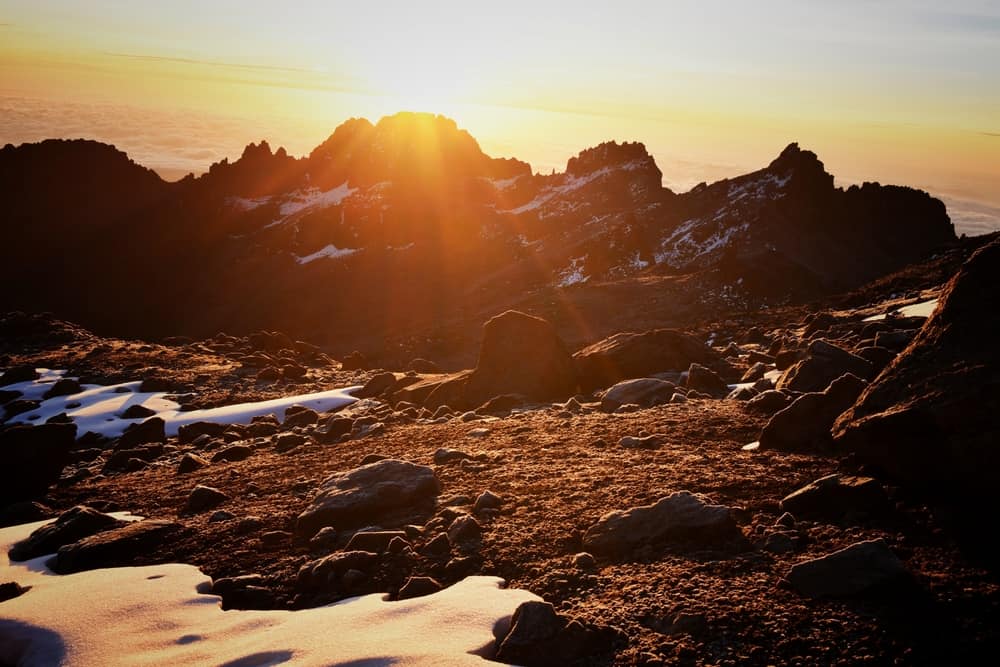
Climbing Mount Kenya to its true summit usually takes 6 to 8 days total.
The paths to its trekking peak, Point Lenana, usually take 4 to 7 days total, depending on the route chosen and pace. The longer routes offer better acclimatization opportunities due to their gradual ascent.
Kilimanjaro climbs usually span from 5 to 9 days, with variations based on the selected route. The longer treks allow for better acclimatization and increase the chances of reaching the summit.
Flora and Fauna
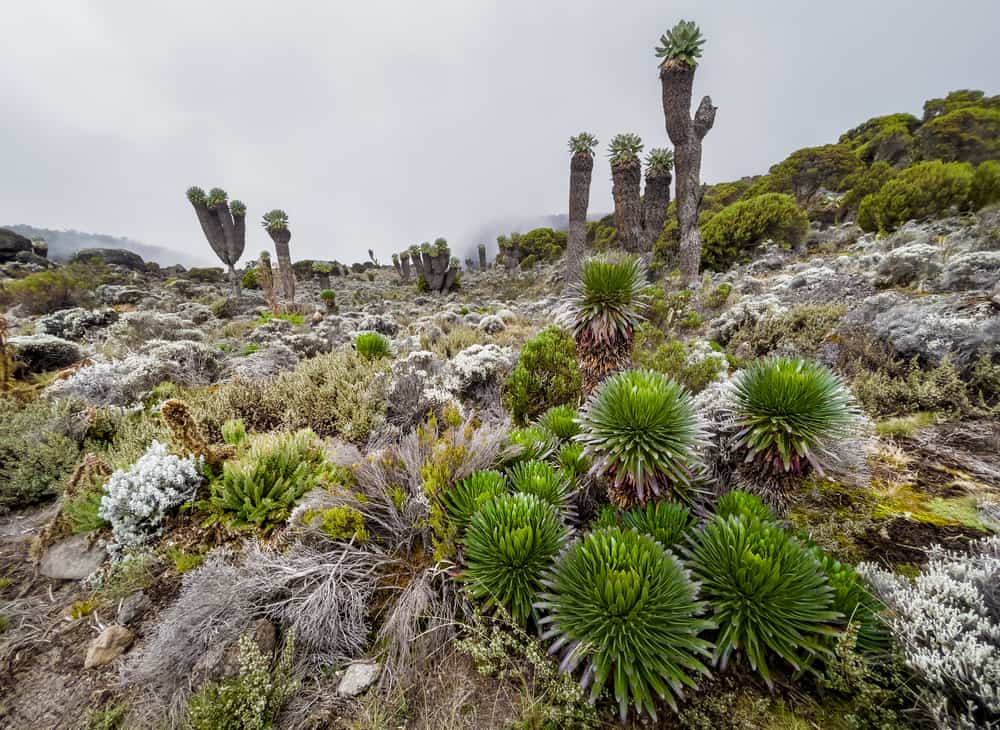
Mount Kenya and Mount Kilimanjaro are located in the same region of Africa and both are isolated volcanic massifs. Thus, they have similar ecosystems that supports a wide range of plant and animal life.
Their lower slopes are shrouded in dense montane forests that are teeming with life. The rainforest zone is characterized by lush vegetation, moss-covered trees, and vibrant birdlife. The air is humid, and the forest provides a serene atmosphere.
As climbers ascend, the scenery transitions to high-altitude moorlands, marked by heather, grasses, and unique flora adapted to the harsh conditions. The unusual giant lobelias and groundsels thrive here. In the alpine desert zone, plant and animal life disappear, offering a surreal landscape devoid of vegetation.
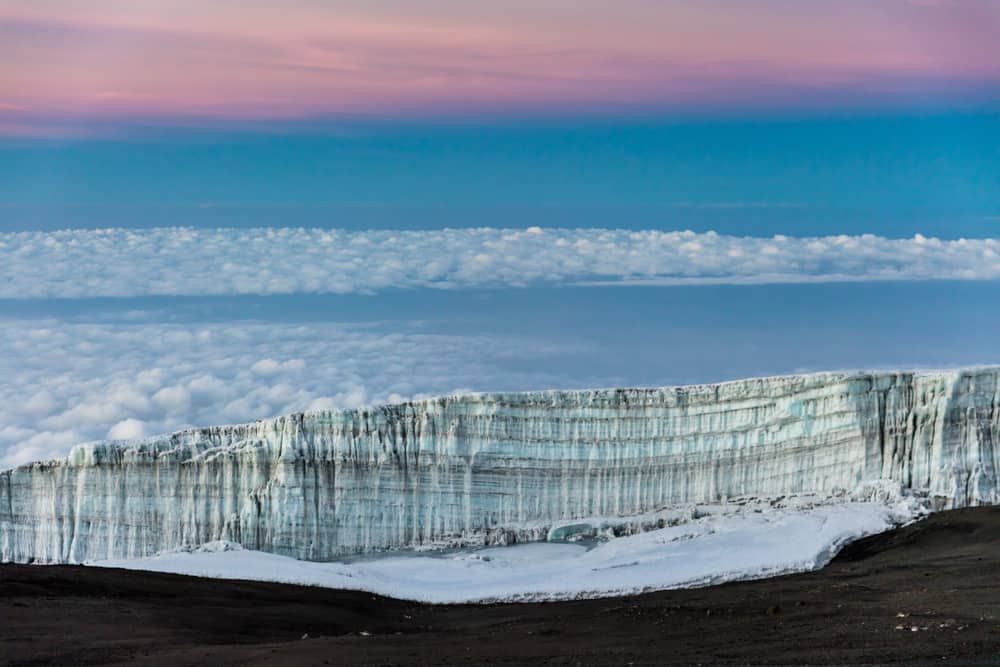
Given Mount Kilimanjaro’s taller height, standing nearly 2,300 feet (700 meters) taller than Mount Kenya, Kilimanjaro has an ecological zone that is lacking on Mount Kenya. Mount Kenya tops out in the alpine desert zone while Mount Kilimanjaro continues upward into the arctic zone. This climate zone is characterized by snow and ice.
Though both mountains offer breathtaking vistas, Mount Kilimanjaro’s snow-capped peak against the African sky is an iconic image that draws climbers from around the world. The stunning glaciers and glittering ice cap make for a surreal experience as climbers approach the summit.
Best Time to Hike
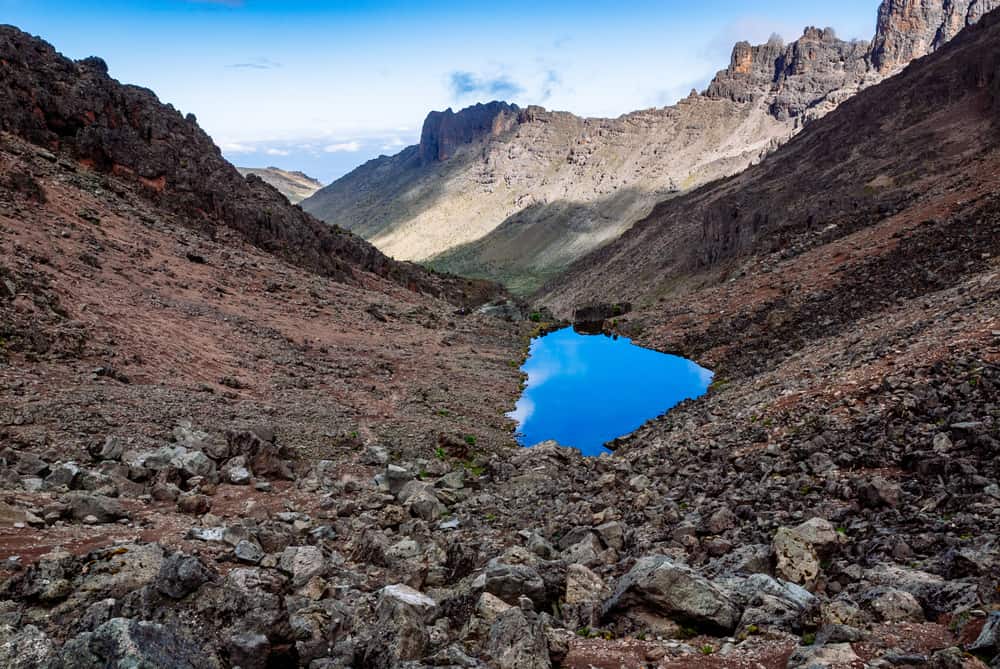
Both Mount Kenya and Mount Kilimanjaro can be climbed year-round.
The best time to climb either mountain is during the dry season, which is the same for both peaks. The dry months of the year are December to February and July to October. These months offer clearer skies and more pleasant hiking conditions.
December is a popular time for climbing Kilimanjaro due to the holiday season.
Crowds
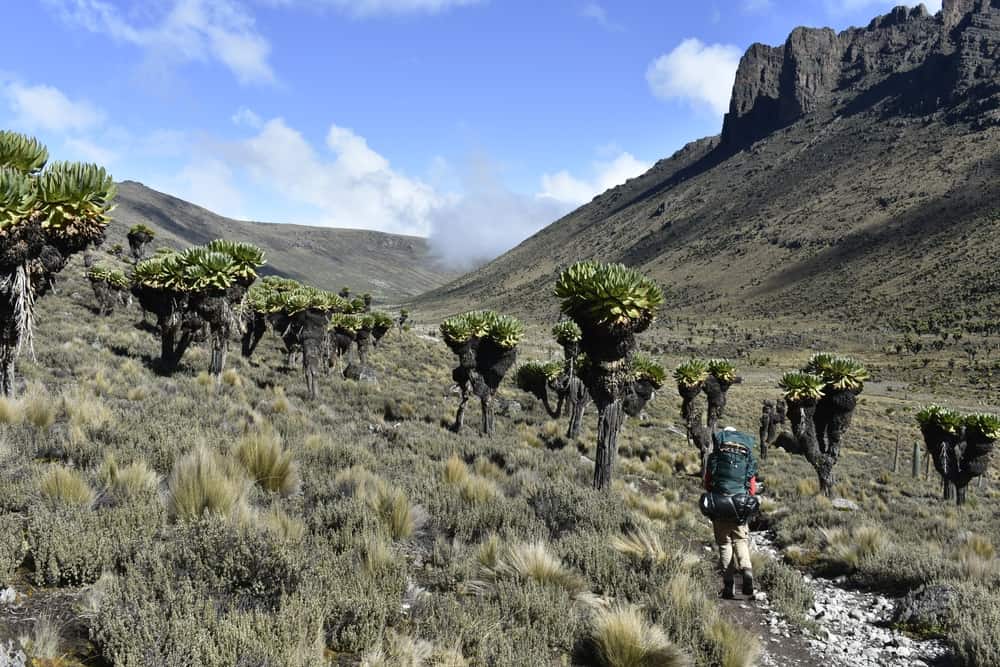
Mount Kenya sees approximately 15,000 visitors per year. Compared to Kilimanjaro, Mount Kenya sees much fewer trekkers, providing a quieter and more secluded experience on the trails. This can be particularly appealing for those seeking a more remote adventure.
Between 30,000 to 50,000 people climb Kilimanjaro annually. Kilimanjaro’s popularity means that the trails can be crowded in certain spots, especially on the Marangu and Machame routes. The Lemosho and Rongai routes are less crowded, offering a more serene experience.
Trip Cost
Climbing Mount Kenya tends to be more affordable than Kilimanjaro, primarily due to its shorter duration. Costs vary based on factors like the route, tour operator, and group size. The average cost of a guided Mount Kenya climb ranges from about $800 to $1500 per person.
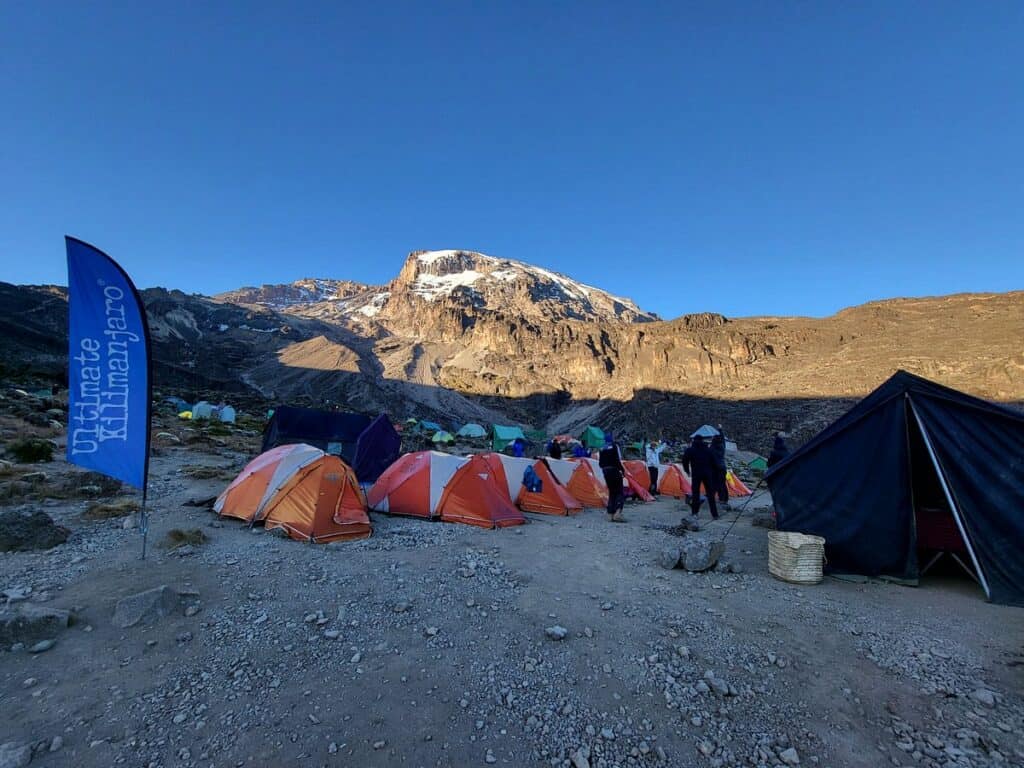
Climbing Kilimanjaro is more expensive. Prices vary widely based on the level of service provided by the operator and the route. The average cost of a guided Mount Kilimanjaro climb ranges from $2,000 to $7,000 per person. However, visitors should be very cautious about budget prices as they are indicative of poor quality guides and services.
The Choice is Yours
Deciding between Mount Kenya and Mount Kilimanjaro ultimately depends on your preferences, fitness level, and what kind of experience you’re seeking. Both peaks present challenges due to their high altitude.
Kilimanjaro’s higher elevation makes altitude sickness a significant concern, especially without proper acclimatization. Mount Kenya, while lower, still demands climbers’ respect for the risks of altitude-related illnesses.
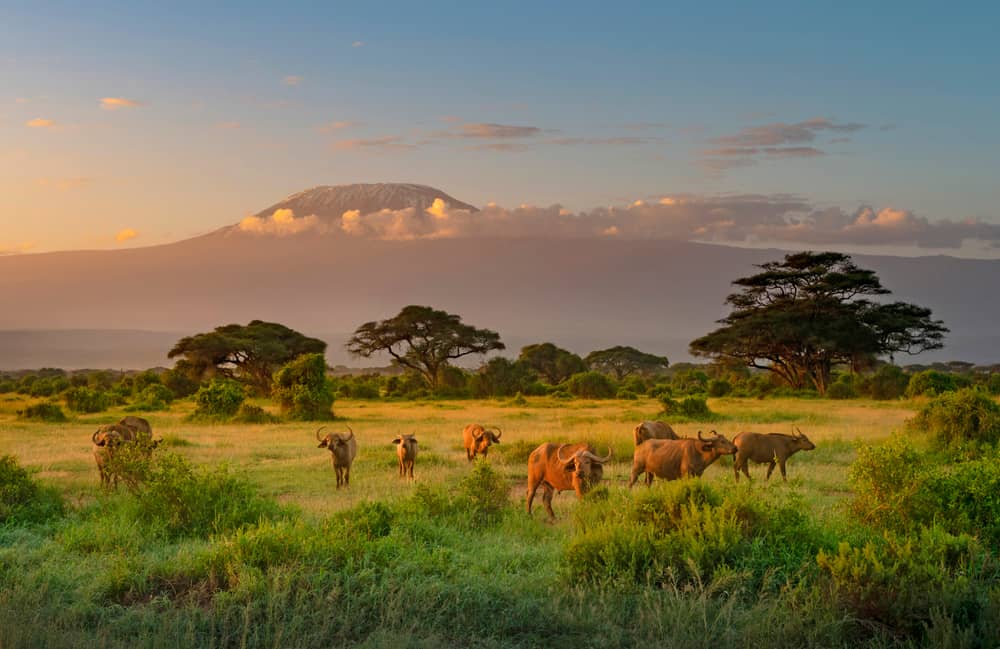
Kilimanjaro has world recognition and symbolic status as one of the Seven Summits. Its non-technical ascent make it an attractive option for many. Meanwhile Mount Kenya is a quieter peak that presents a technical achievement at a lower cost.
Both mountains promise unforgettable memories, breathtaking panoramas, and a sense of accomplishment that only conquering a mountain can provide.



















































